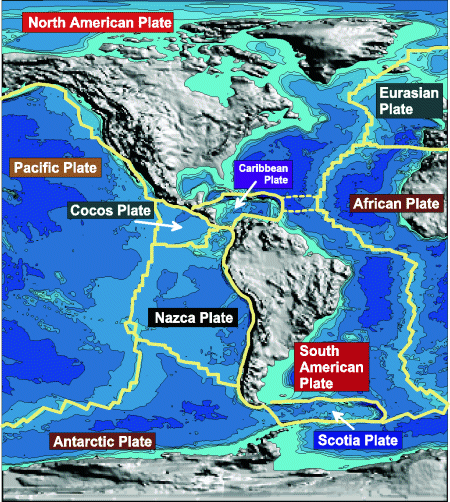|
| Surfer - Shaded Relief Maps |
 |
| |
| Surfer Shaded Relief Maps Surfer Shaded Relief maps create a shaded relief map from a grid [.GRD] file or USGS DEM file. These maps use different colors to indicate surface slope and slope direction relative to a user-defined light source direction. Surfer determines the orientation of each grid cell on the surface, and assigns a unique color to each grid cell. Colors on shaded relief maps are associated with light striking the surface. The light source can be thought of as the sun shining on a topographic surface. Surfer automatically blends colors between percentage values so you end up with a smooth color gradation over the map. You can add color anchors so each anchor point can be assigned a unique color, and the colors are automatically blended between adjacent anchor points. This allows you to create color maps using any combination of colors. Shaded relief maps can be created independently of other maps, or can be combined with other maps in map overlays (using the Overlay Maps command). Shaded Relief maps can be scaled, resized, limited, and moved in the same way as other types of maps. |
| |

Combine a shaded relief map with contour and base map features. |
| |
| Shaded Relief Map Features |
- Create photo-quality relief maps from grid files
- Control light source position, relative slope gradient, and shading
- Use custom color spectrum files for the exact desired display
- Overlay with contour, vector, post, or base maps for highly effective displays
- Shading calculations based on several shading methods, including Simple, Peucker's Approximation, Lambertian Reflection, and Lommel-Seeliger Law
- Set relief parameters using Central Difference or Midpoint difference gradient methods
- Specify color for missing data
- Change the rotation and tilt angles.
|
| |
|
|
|
|
| Helping Communities |
|
Project Review
Ecoseal reviewed the ACIAR Project on Sustainable Agriculture in Saline Environments through Serial Biological Concentration, which was carried out in Pakistan and Australia. |
|
| Read More |
|
Seawater Intrusion Model for the Island of Kayts, Sri Lanka
Assessing sustainable water supply options for Kayts to limit the impact of saline groundwater upconing and saltwater intrusion along the northwest coast of Sri Lanka. |
| Read More |
|
Groundwater Management Model for the Lower Murray, Australia
The aim of this project was to develop a groundwater management model which was used by natural resource managers and the community to better manage the groundwater resources of the Lower Murray. This region has been designated as a potential high-risk aquifer system.
|
| Read More |
|